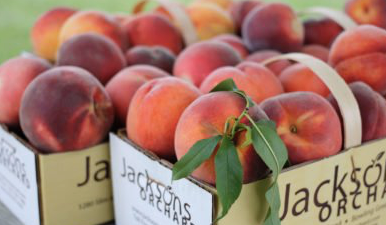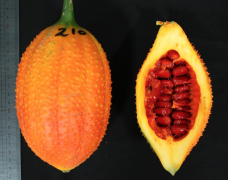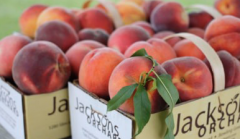Characteristics, planting techniques and matters needing attention management of Mexican yellow peach
The big peach of the Mexican yellow peach has an eye-catching red blush and is sweet and juicy. This low-fluffy fruit is delicious and can be eaten directly from trees, but the hardness of this peach makes it the best choice for freezing.
USDA Plant 4-8 cold hardening areas are ideal for these vibrant production trees because, like all peach trees, Messina needs to be cold in winter. Read on and learn more about Messina yellow peaches. Messina Peach Information Messina Peach is introduced by Rutgers University New Jersey Agricultural Experimental Station. Messina peach trees have been well evaluated for their exuberant growth habits and low sensitivity to bacterial leaf spot.
Depending on the climate, look for Messina peaches to mature between mid-July and mid-August. Messina peach care Messina trees are self-pollinated. However, close pollinators may lead to larger crops. Choose a variety like Messina peaches that blossoms relatively early. If you plant this peach tree, you can receive at least six to eight hours of full sunshine every day.
Avoid heavy clay positions, as growing Messina peaches require well-drained soil. Peach trees may also struggle under sandy, rapid drainage conditions. Before planting, repair the soil with large amounts of rotten manure, dry leaves, grass crumbs or compost. Don't fatten the planting hole.
Once established, Messina peach trees usually don't need much supplementary irrigation if you rain regularly. If the weather is hot and dry, soak the tree thoroughly every 7 to 10 days. Fertilize Messina when the trees begin to bear fruit. Until then, rotten manure or compost was sufficient unless the soil was very poor. Use peach trees or orchard fertilizer to feed peach trees in early spring.
Do not fertilize peach trees after July 1, as the erosion of new growth is vulnerable to winter freezing. Pruning Messina peaches is most effective when the trees are dormant; otherwise, you may weaken the trees. However, you can trim the trees gently in summer. Remove suckers when they appear because they absorb water and nutrients from trees.

- Prev

Is Taiwan mandarin fruit a fruit? What are the nutritional values and uses of the fruit?
Is the wood nut a fruit? How would you like it? In order to popularize the original characteristic crop, the Taitung District Agricultural improvement Farm of the Committee of Agriculture of the Executive Yuan (hereinafter referred to as Taitung Field) conducted the "presentation on the Multi-Application of the original characteristic crop" and published the "original seed Wood".
- Next

Mexican yellow peach characteristics, Mexican yellow peach planting technology and precautions management
Mexican yellow peach large peach with a striking red blush, sweet and juicy. This low-fuzz fruit is delicious and eaten straight from the tree, but the firmness of this peach makes it the best choice for freezing. USDA Plant Nos. 4 through 8 Cold Resistant Zone Perfect for
Related
- A course of planting techniques and methods on how to grow carrots
- How to plant the latest tulips?
- Is it better to pick tea in the morning or in the afternoon? When is the best time for tea to be picked? what is the third or fifth tea?
- Launch Yuanxiao Happy combination Haocha + Tea Yuan healthy Taste
- Penghu Tourism "Fireworks 20 Parade with You"
- 2022 West Lake Happiness holds "Digital Revitalization Voucher" and draws iphone13 and laptop.
- Banqiao Fuzhou social houses are designed to change start-up combined with police elimination to create a safe and livable environment
- The convenient measure of "mechanical weeding" in Xinbei has been abused and the Agriculture Bureau has imposed heavy penalties on the illegal land consolidation.
- Changgeng University Joins Hands with Four Memory Factories to Rescue Memory Talent Shortage
- The list of Taiwan's top 100 MVP managers is listed by the Director-General of the Farmers' Association of Sanxia District.

